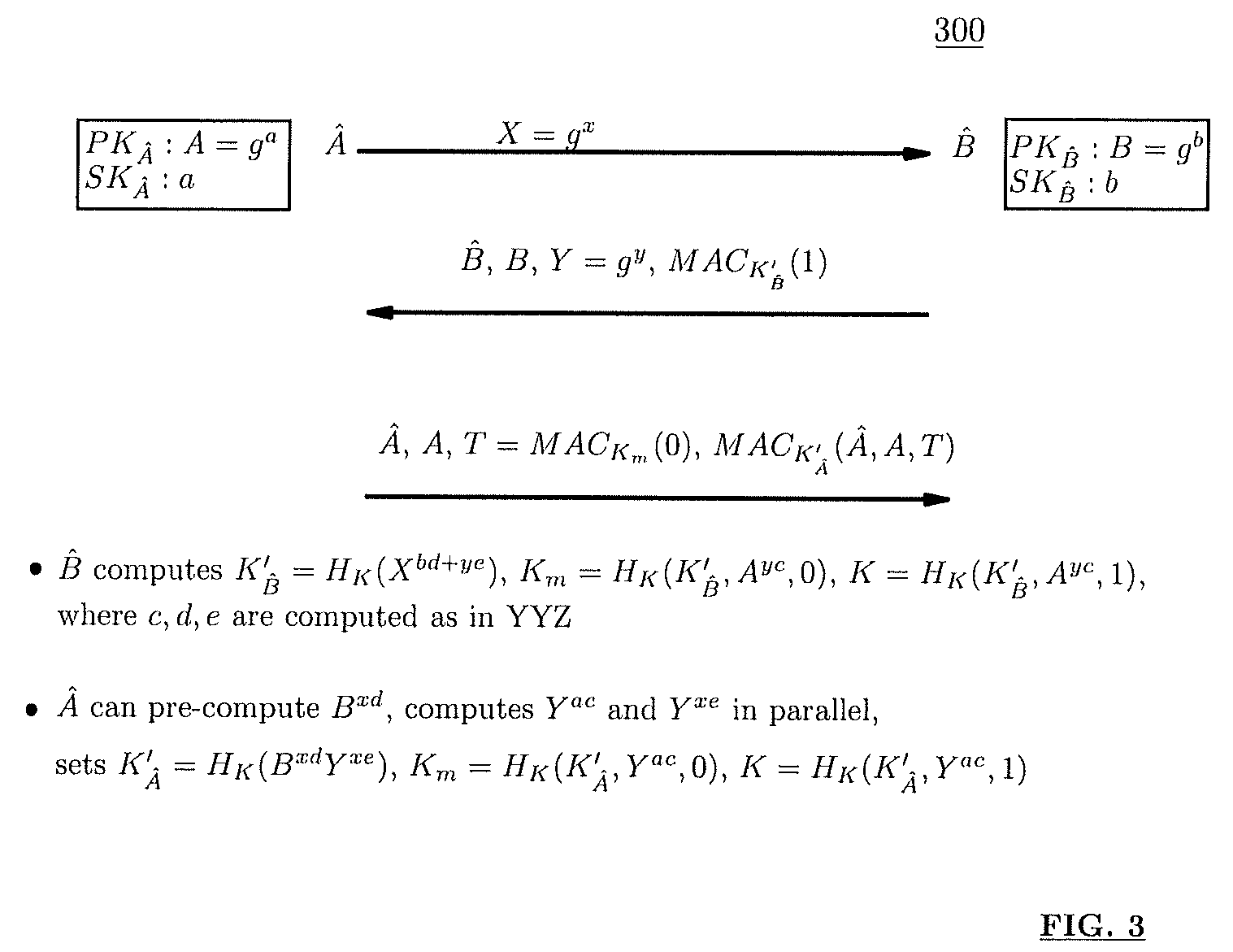Method and structure for self-sealed joint proof-of-knowledge and diffie-hellman key-exchange protocols
a proof-of-knowledge and key-exchange technology, applied in the field of proof-of-knowledge (pok), can solve the problems of inconvenient use, inconvenient design of correct and secure dhke protocols, and inability to meet the requirements of security and privacy, and achieve the effect of improving the security, privacy and efficiency of authenticated dhke protocols, soundness and robustness of the underlying design
- Summary
- Abstract
- Description
- Claims
- Application Information
AI Technical Summary
Benefits of technology
Problems solved by technology
Method used
Image
Examples
Embodiment Construction
[0039]Referring now to the drawings, and more particularly to FIGS. 1-13, wherein are shown exemplary embodiments of the methods and structures according to the present invention.
Preliminary Notes
[0040]As a preliminary note on groups and notations, all the protocols and operations discussed herein assume a cyclic subgroup G of a finite group G′, where the order of G′ is N, there order of G is q of G′, g is a generator of G, where q is a large prime (typically, |q|=160, where |q| denotes the bit length of q, e.g., |q|=└ log2 q┘ meaning the logarithm of q to base 2). The inventors use multiplicative representation of group operations herein, but the treatment is equally applicable to additive groups, e.g., elliptic curves or any other algebraic groups or specific groups, finite fields, composite moduli, etc. The operations of exponents are assumed to be module q, while operations of group elements are assumed to be module N. For simplicity, the parameters G, q, g are assumed to be fix...
PUM
 Login to View More
Login to View More Abstract
Description
Claims
Application Information
 Login to View More
Login to View More - R&D
- Intellectual Property
- Life Sciences
- Materials
- Tech Scout
- Unparalleled Data Quality
- Higher Quality Content
- 60% Fewer Hallucinations
Browse by: Latest US Patents, China's latest patents, Technical Efficacy Thesaurus, Application Domain, Technology Topic, Popular Technical Reports.
© 2025 PatSnap. All rights reserved.Legal|Privacy policy|Modern Slavery Act Transparency Statement|Sitemap|About US| Contact US: help@patsnap.com



